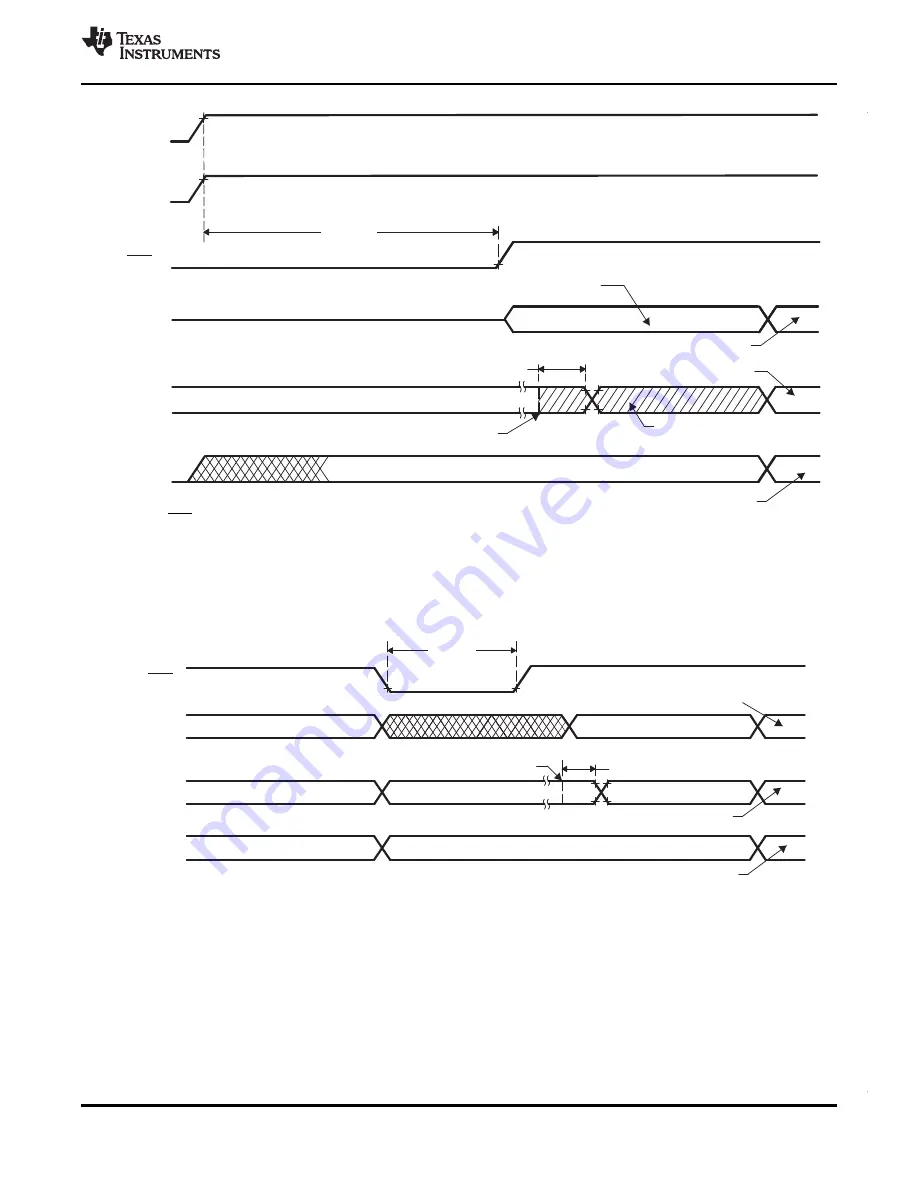
ADV
ANCEINFORMA
TION
t
h(boot-mode)
(A)
XRS
Boot-Mode
Pins
I/O Pins
CPU
Execution
Phase
Boot-ROM Execution Starts
User-Code Execution Starts
User Code
Boot ROM
User-Code Dependent
User Code
Peripheral/GPIO Function
User-Code Dependent
GPIO Pins as Input (Pullups are Disabled)
GPIO Pins as Input
Peripheral/GPIO Function
t
w(RSL2)
t
h(boot-mode)
(B)
XRS
(A)
Boot-Mode
Pins
V
V
(3.3 V)
DDIO
DDA
,
V
(1.2 V)
DD
User-code dependent
Boot-ROM execution starts
Peripheral/GPIO function
Based on boot code
GPIO pins as input
CPU
Execution
Phase
Boot ROM
User-code
I/O Pins
GPIO pins as input (pullups are disabled)
User-code dependent
t
w(RSL1)
TMS320F28377S, TMS320F28376S, TMS320F28375S, TMS320F28374S
SPRS881A – AUGUST 2014 – REVISED JUNE 2015
A.
The XRS pin can be driven externally by a supervisor or an external pullup resistor, see
. On-chip POR logic
will hold this pin low until the supplies are in a valid range.
B.
After reset, the boot ROM code samples Boot Mode pins. Based on the status of the Boot Mode pin, the boot code
branches to destination memory or boot code function. If boot ROM code executes after power-on conditions (in
debugger environment), the boot code execution time is based on the current SYSCLK speed. The SYSCLK will be
based on user environment and could be with or without PLL enabled.
Figure 5-3. Power-on Reset
A.
After reset, the Boot ROM code samples BOOT Mode pins. Based on the status of the Boot Mode pin, the boot code
branches to destination memory or boot code function. If Boot ROM code executes after power-on conditions (in
debugger environment), the Boot code execution time is based on the current SYSCLK speed. The SYSCLK will be
based on user environment and could be with or without PLL enabled.
Figure 5-4. Warm Reset
Copyright © 2014–2015, Texas Instruments Incorporated
Specifications
59
Product Folder Links:
















































